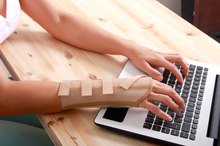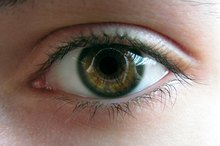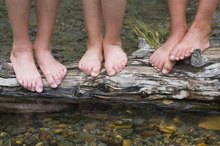Exercises for Hypotonia
Hypotonia is a condition in both infants and children that results in decreased muscle tone 3. In cases where this condition cannot be cured, the two main treatments include physiotherapy and occupational therapy. These therapies focus on improving posture and coordination as well as strengthening the muscles to provide support and stability. The treatments help to improve muscle tone and decrease symptoms.
If you are experiencing serious medical symptoms, seek emergency treatment immediately.
Massage and Compression
Stimulating blood flow to the joints improves muscle tone and can make up an important part of therapy. A firm pressure massage may be performed to stimulate the development of deep skeletal musculature. Joint compression wraps may also be recommended. Compression wraps or clothing worn a few hours every day cause increased blood flow to the joints and extremities, leading to greater development of muscle tissue.
- Stimulating blood flow to the joints improves muscle tone and can make up an important part of therapy.
- A firm pressure massage may be performed to stimulate the development of deep skeletal musculature.
Weight Training
Rehabilitation Exercises for a Dislocated Finger
Learn More
Increasing muscle tone can be achieved through simple exercises performed at home. Beanbags can be used in both infants and older children to improve muscle tone. For a small child, place a small beanbag on the hand or foot and help the baby raise that limb. Older children and adults can use beanbags on their own. As strength increases, backpacks with books in them are also a good option for weight training, and the weight can varied depending on each person's physical level.
- Increasing muscle tone can be achieved through simple exercises performed at home.
- As strength increases, backpacks with books in them are also a good option for weight training, and the weight can varied depending on each person's physical level.
Stimulation
Undeveloped muscle areas should be stimulated through a variety of strategies including pressure massage, thermal stimulation with ice or heat, tapping and vibration. These therapies can be used on both infants and older children when one muscle group remains weak. Stimulating the area with any of these therapeutic options results in increased blood flow to the area and helps to wake up nerve fibers, allowing greater feeling in that area.
- Undeveloped muscle areas should be stimulated through a variety of strategies including pressure massage, thermal stimulation with ice or heat, tapping and vibration.
- These therapies can be used on both infants and older children when one muscle group remains weak.
Developing Fine Motor Skills
What Are the Treatments for Bone Spurs in the Cervical Spine?
Learn More
While most of the basic exercises focus on gross motor skills, therapy exercises also focus on small motions that allow people to pick up things, write and do other necessary tasks. These exercises can be used at any age. Exercises may include placing objects on a table and having the person reach out and pick them up. Try rubbing the hands and feet together, first the left hand to the left foot and then the right hand to the right foot, changing the pattern to improve coordination. These exercises improve fine motor control when completed regularly.
- While most of the basic exercises focus on gross motor skills, therapy exercises also focus on small motions that allow people to pick up things, write and do other necessary tasks.
Related Articles
References
Writer Bio
Meredith C. has worked as a nutrition educator, chef and community health projects since 2011. She received a Bachelor of Science in nutrition from the University of Tennessee and is currently completing an MS/DI program in nutrition.









